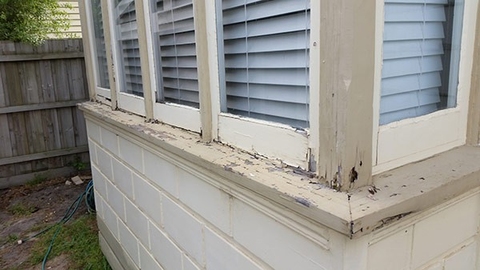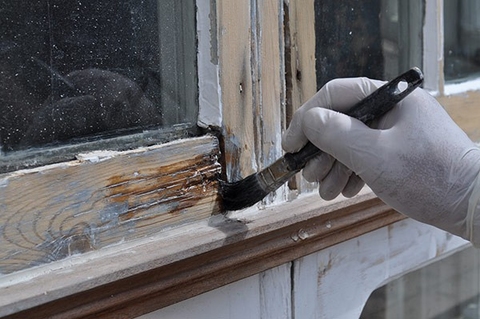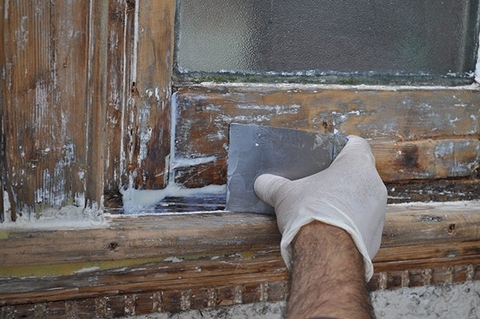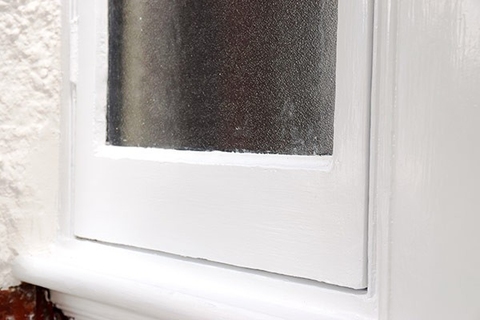FREE UK DELIVERY
On orders over £60 (Trade £95)
FREE UK DELIVERY
On orders over £60 (Trade £95)
Technical Knowledge
Experienced & Dedicated Staff
Trade Discounts
Register or login for trade prices
13 June 2023
Timber windows exude timeless elegance, adding warmth and character to any home. However, over time, these windows can suffer from wear and tear, leading to issues such as rot, decay, or damage.
Fortunately, with proper care and attention, it is possible to breathe new life into timber windows and restore their original beauty. There are many benefits of repairing timber windows and we will highlight some essential tools and materials, including products by Timbabuild, that can aid in the restoration process.
There are many different components of a timber window to keep an eye on:
Timber windows use various hardware components to facilitate smooth operation and secure locking. These include hinges, handles, latches, stays, and locks. Hinges allow the sashes to open and close, while handles and latches provide a means to operate the windows. Stays hold the sashes in an open position, and locks ensure security when the windows are closed.
Timber windows require finishes to protect the wood from moisture, UV rays, and other environmental factors. Finishes like paints, stains, or clear coatings are applied to the timber surfaces, enhancing their appearance and durability. These finishes can also be customized to match the desired aesthetic or architectural style.
Start by dusting the window frames and sashes with a soft brush or cloth to remove loose dirt and debris. Use a mild soapy solution and a non-abrasive cloth or sponge to clean the surfaces of the timber. Avoid using harsh chemicals that could damage the wood. Pay special attention to the corners and joints where dirt can accumulate. Rinse the timber with clean water and wipe dry to prevent moisture absorption.
Regularly inspect the timber frames and sashes for any signs of damage, such as cracks, rot, or peeling paint. Check the condition of the seals and weatherstripping to ensure they are intact and providing a proper seal. Look for any signs of water infiltration or moisture damage, including discoloration or softening of the wood.
Repairing timber windows is generally a more cost-effective solution compared to full replacements. By addressing specific issues and undertaking necessary repairs, you can extend the lifespan of your windows without the need for expensive replacements. Timber windows often possess unique architectural features and historical value that add charm to your property. By repairing rather than replacing them, you can maintain the original character of your home while enhancing its overall aesthetic appeal. Also, opting for repairs aligns with environmentally friendly practices by minimizing waste and reducing the demand for new materials. By prolonging the life of timber windows, you contribute to sustainable living and conservation efforts.
Depending on the age and condition of your timber window you will need a variety of materials to address different aspects of the restoration process. Here are the essential materials you will need:
Repairing a timber window can help restore its functionality and prolong its lifespan. How to repair your window can vary depending on the extent of damages. Here is a step-by-step guide for common timber window repairs:
Assess the Damage: Start by examining the window frame and sash to identify any areas that require repair. Look for signs of rot, decay, cracks, or loose joints.

Remove Damaged Wood: Use a chisel, scraper, or other suitable tools to carefully remove any rotted or damaged wood from the window frame or sash. Take care not to cause further damage to the surrounding areas.
Treat for Decay: If you discover any areas affected by rot or decay, it's essential to treat the wood to prevent further deterioration. Apply a wood preservative or rot treatment solution according to the manufacturer's instructions. Allow it to penetrate the wood and dry thoroughly.

Fill and Shape: Use a suitable wood filler, such as Timbabuild EHB60 or a similar product, to fill the gaps and holes left by the removed wood. Follow the manufacturer's instructions for mixing and applying the filler. Use a putty knife or a similar tool to shape the filler and create a smooth surface that matches the surrounding wood.

Sanding: Once the filler has cured, use sandpaper or a sanding block to sand the repaired area. Start with a coarse-grit sandpaper and gradually move to finer grits until the surface is smooth and blends seamlessly with the rest of the wood.
Prime and Paint: Apply a primer to the repaired area to ensure proper adhesion of the paint. Once the primer has dried, apply a suitable exterior-grade paint that matches the colour and finish of the window. Multiple coats may be necessary for full coverage and a uniform appearance.

Replace Hardware: If any window hardware, such as hinges or handles, is damaged or worn out, consider replacing them during the repair process. Choose hardware that fits the style and functionality of the window.
Regular Maintenance: To keep your repaired timber window in good condition, make sure to perform regular maintenance. This includes cleaning the window, inspecting for any signs of damage or wear, and addressing any issues promptly.
Remember, if you're unsure about any aspect of the repair process or if the damage is extensive, it's recommended to consult a professional or a qualified carpenter with experience in timber window repairs. They can provide guidance and ensure the repair is done correctly.
By following these steps and using quality materials, you can successfully repair a timber window, restoring its functionality and enhancing its longevity.
Timbabuild Starter Repair Kit:
Timbabuild is a renowned British brand specialising in the development and manufacture of innovative timber repair systems. With a commitment to providing high-quality products, Timbabuild has become a trusted name in the field of timber restoration and repair.
The brand offers a comprehensive range of solutions designed to address the challenges associated with timber decay, damage, and deterioration. These products are developed through extensive research and are specifically formulated to provide effective and long-lasting repairs for timber structures such as windows, doors, frames, and other wooden components. To complete a Timber window repair from start to finish we highly recommend the Timbabuild Starter Kit.